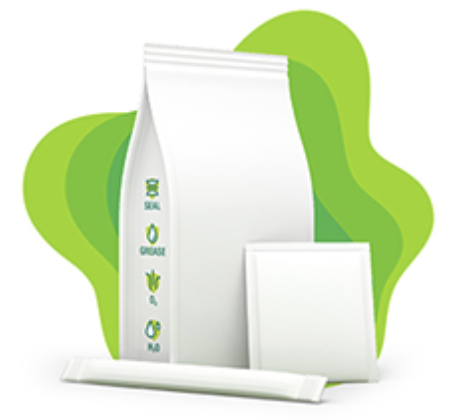
By Michael Browne, senior brand mgr., Paperboard, Sappi North America
Recently, several leading consumer brands and retailers have made sweeping commitments [1] to drive sustainability and waste management in their packaging processes. The United Nations as well has outlined 17 sustainable development goals (SDGs) [2] for organizations to strive for in their business operations. As producers focus on innovation and R&D to reduce their plastic usage, it’s critical they understand industry best practices to adjust packaging practices and sustainable materials they can leverage in place of plastic. This article will focus on the use of wood fiber as a substitute for plastic and the attributes that make it an ideal renewable resource; also provided are use cases for wood fiber and steps companies can take to integrate them into their business.
The problem with plastic
The world has a single-use plastic problem; the majority of plastic does not get recycled [3] and much of it ends up in the ocean or landfills. As such, sustainability initiatives are no longer becoming a “nice to have” marker of social responsibility, nor are they considered a competitive advantage for companies.
Eighty-seven percent of consumers think retailers should curb the amount of plastic packaging they use [4]. Legally, global governing bodies are passing sweeping environmental recommendations – the Break Free From Plastic Pollution Act [5] was introduced in the US Congress in 2021, and in 2015, all member states of the United Nations adopted the 2030 Agenda for Sustainable development, which relies on 17 Sustainable Development Goals for global peace and prosperity, of which responsible production and consumption is a key component. Companies, such as Estee Lauder and Unilever, [6] are responding to the pressure with sweeping declarations of plastic reduction, but of the several material options in front of brands to replace plastic, none are better than paperboard made from wood fiber.
Why wood fiber?
Unlike single-use plastics made from crude oil, wood fiber is renewable, the process of converting to paperboard involves maximum use of renewable energy, and it can be recycled multiple times. Paper and paperboard also have the highest overall recycling rate of all materials in municipal solid waste. The benefit of fiber-based packaging comes from wood fiber, which is:
- Accessible: Wood fiber is one of the most commonly found materials in nature, and – with sustainably managed forests – can be harvested without damage to the environment.
- Biodegradable: Cellulose, in most cases, is naturally biodegradable without human intervention.
- Malleable: Cellulose’s properties lend themselves to be altered to meet human needs. From a durability standpoint, R&D efforts can transform cellulose materials to be resistant to the elements depending on packaging need.
There is a perception that there is a lower level of quality for paper-based products versus plastics, leading consumers to believe that they must accept a subpar product for the sake of sustainability. However, this is not exactly the case. When using different parts of the tree, commonly cited issues with paper-based packaging (lack of visibility to the product if a plastic window is removed or that the product could be exposed with removal of the window) are solved – these substitutes nearly equal the quality of plastic.

With its ideal properties, wood fiber is more than just a sustainable option. Ideal applications of wood fiber can be seen in gift cards, paper bags, luxury packaging for cosmetics, premium packaging for food and beverages and more (see Figure 1). Brands must think beyond paper and paperboard to see wood fiber’s true benefits.
The dilemma for businesses
So, with all the sustainable and quality-control benefits that wood fiber bring as a suitable plastic replacement, why is it so hard for businesses to make the transition?
Switching product packaging is achievable, but the entire supply chain needs to be involved in bringing new designs to market. From conception to implementation, there are a number of detailed considerations to qualify a design with a new packaging substrate. The sustainability impact of damaged or spoiled product in the supply chain could negate the environmental benefits if the packaging doesn’t achieve the basic requirement of protecting the product. This is why the design and qualification phase is so critical, and why it can be complex when making any changes in packaging. Your entire supply chain must be adapted to accommodate the transition and, as shown by the current global supply-chain disruptions, one point of inefficiency can derail an entire system. It is a time, and often monetary, drain to change over a company’s supply chain, which is a common detractor.
The importance of the design and qualification phase also create a larger conversation for the investment these companies must make in research and development to scale wood-fiber solutions. While there are many companies on the market specializing in modifying wood fiber and cellulose into high-quality, durable packaging, the costs to develop this are higher than plastic which are put back onto companies and are often felt by the consumer. Companies can also choose to develop their own R&D efforts in-house to develop a wood-fiber material that suits their needs but sourcing that level of expertise can take years.
With all these considerations in mind, businesses must be methodical in how they phase out plastic and transition to wood fiber. Brands must work through their supply chain and identify what can be replaced easily, what is essential to keep in the short-term and any changes that can be made in-house to support the effort. Then, they must identify the products that can quickly be adapted to wood-fiber substitutes – in most cases, this is a product that lives at the intersection of popularity, but not business-critical. This will give businesses an opportunity to gauge performance issues with a wide sampling and adapt materials accordingly. From there, a full shift can happen more expediently, which is what we’re seeing with brands that are pledging plastic-free/plastic-reduction as soon as 2025.
More than anything, it is imperative that brands make a transition to wood fiber that is sustainable from a business perspective. Improper implementation can reduce overall environmental impact and set back future progress in substituting plastic for wood fiber.
Conclusion
Wood fiber provides an intersection of sustainability and quality that brands have been searching for to fulfill their environmental pledges. With cellulose as a base for a wide variety of materials that vary in biodegradability, thickness/structure and product applications, in theory there is no reason it cannot be widely applied as a plastic substitute. The true challenge comes from adapting wood fiber into long-standing businesses practices. Through diligent analysis of supply-chain operations and methodical implementation into existing product lines, wood fiber can replace plastic efficiently and keep businesses on track to meet customer demands and global sustainability goals.
References
- https://www.mckinsey.com/industries/paper-forest-products-and-packaging/our-insights/the-drive-toward-sustainability-in-packaging-beyond-the-quick-wins
- https://sdgs.un.org/goals
- https://www.unep.org/interactives/beat-plastic-pollution/
- https://oceana.org/blog/opting-out-amazon-shoppers-would-choose-plastic-free-packaging-if-they-had-choice/
- https://www.congress.gov/bill/117th-congress/senate-bill/984/all-info
- https://www.gobankingrates.com/money/business/companies-have-committed-to-reducing-waste-how-they-plan-to-do-it/

Michael Browne, senior brand mgr., Paperboard, at Sappi North America, a subsidiary of Sappi Limited, holds a Bachelor of Science in Chemical Engineering from the University of Maine and is pursuing an MBA from Boston University’s Questrom School of Business with innovation and sustainability concentrations. He has 10 years of experience serving the paper industry in a variety of roles, including process engineering, operations, sales and marketing positions. Having spent several years in recycled-paper mills, Michael understands the challenges for recovered-paper end markets. He can be reached at www.linkedin.com/in/browne-michael, email: sappi@matternow.com.

